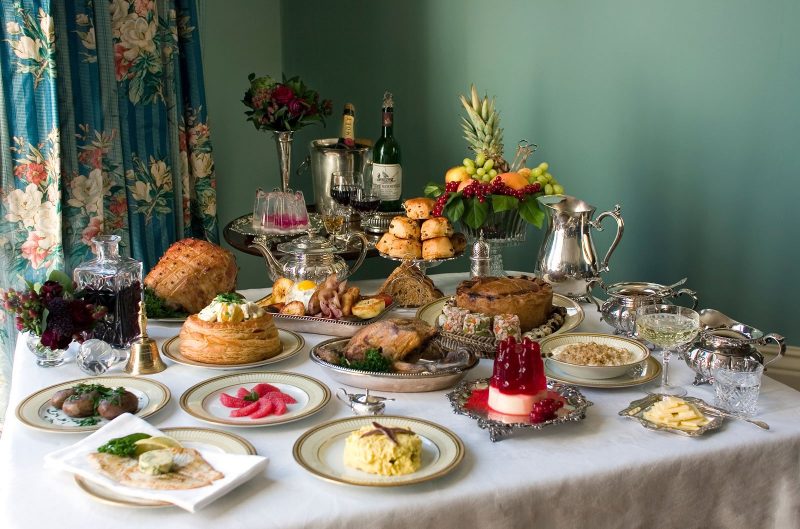
PHOTO: pinterest
We’ve done a post on weird recipes from the Victorian Times, but have you ever wondered what the basics of Victorian cooking were really like?
The Victorian period was an exciting time for the budding cook. With the invention of steam power and ice boxes, ingredients from far away places suddenly became available. Cooks had access to new fruits, spices, and vegetables from the Far East and America, and found all sorts of ways to incorporate them into dishes.
It was the time of new inventions, too. Victorian cooks now had access to better stoves and more widespread access to running water than ever before. They also had access to newfangled cooking gadgets, like egg beaters, ice cream makers, rotary apple peelers, and more. This made the hard work of cooking for a big household much easier, which in turn meant that the Victorian upper class began to enjoy more and more complex meals with each passing year.
In the upper class, meals were a way of showing off one’s wealth. Some wealthy families had as many as 20 dishes served at one dinner! Each would be carefully prepared by a host of cooks “below-stairs”, and then brought up and served by an army of footmen, directed by a butler.

PHOTO: victorian-era.org
Presentation was everything. A strange food culture emerged where a hostess had to know exactly where everyone was sitting, had special cutlery for each food, and spent hours upon hours choosing the decorations for the feast. Each time of the year had acceptable decorations – from pressed flowers to holly garlands to candied fruit. Arranging flowers cut from the garden became an art form.
One YouTube channel has sought to give us an inside-look at exactly how servants of upper-class Victorian society managed this immense burden. They’ve created a number of videos detailing the daily life and recipes of the fictional “Mrs Crocombe”, the head cook for a well-to-do Victorian family in England.
The videos are filmed at Audley End House and Gardens, a historical home near Hertfordshire, England. Mrs Crocombe wears traditional dress, and stays in-character throughout the recipe how-to, using ingredients and tools that would have been available during the Victorian Era.
It’s pretty cool, check it out for yourself. If you want to try the recipes, Mrs. Crocombe often gives you suggestions for modern-day substitutes while she’s working.

